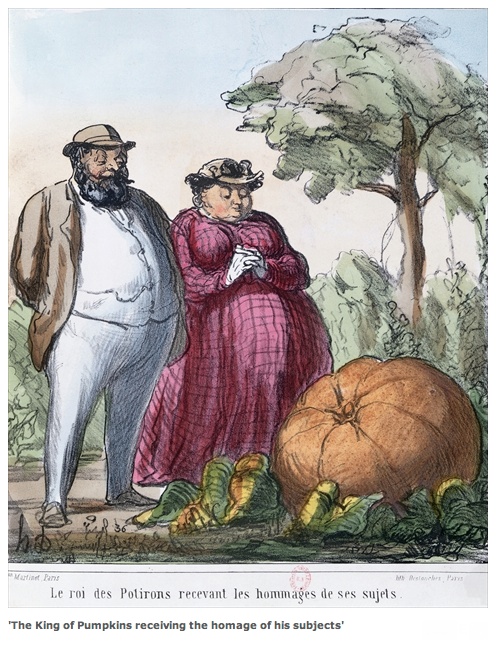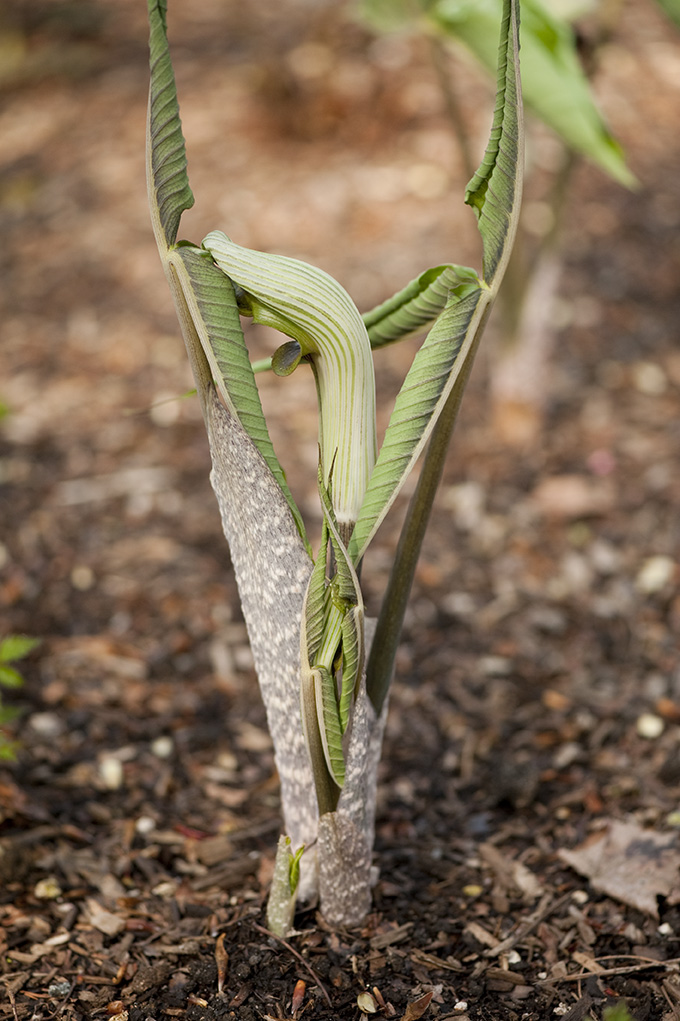Extreme Gardening: The Giant Pumpkin
Posted in Around the Garden, Science on May 4 2011, by Thomas Andres
| Thomas C. Andres is an Honorary Research Associate at the Garden. |
President “Bobby”: Mr. Gardner, do you agree with Ben, or do you think that we can stimulate growth through temporary incentives?
[Long pause]
Chance the Gardener: As long as the roots are not severed, all is well. And all will be well in the garden.
President “Bobby”: In the garden.
Chance the Gardener: Yes. In the garden, growth has it seasons. First comes spring and summer, but then we have fall and winter. And then we get spring and summer again.
President “Bobby”: Spring and summer.
Chance the Gardener: Yes.
President “Bobby”: Then fall and winter.
Chance the Gardener: Yes.
Benjamin Rand: I think what our insightful young friend is saying is that we welcome the inevitable seasons of nature, but we’re upset by the seasons of our economy.
Chance the Gardener: Yes! There will be growth in the spring!
Benjamin Rand: Hmm!
Chance the Gardener: Hmm!
President “Bobby”: Hm. Well, Mr. Gardner, I must admit that is one of the most refreshing and optimistic statements I’ve heard in a very, very long time.
[Benjamin Rand applauds]
President “Bobby”: I admire your good, solid sense. That’s precisely what we lack on Capitol Hill.

This is an exact quotation from the 1979 movie Being There and in a sad way, it is remarkably relevant today. Actually, we should be so lucky as to have politicians listen to a gardener, even one as simple-minded as the protagonist in this movie. I can only think of a few examples in recent times of national politicians who were gardeners. President Jimmy Carter was a peanut farmer, and Michelle Obama has become an avid kitchen gardener at the White House. Less known, at least in the United States, is that Ariel Sharon, whose father was an agronomist, was a commercial pumpkin grower in Israel. Thomas Jefferson was probably our most famous politician who was also a gardener. Jefferson introduced to the United States a number of new crops, including Brussels sprouts, eggplant, cauliflower, and broccoli, that he acquired overseas while the envoy to France. He was also innovative in cultivation practices and in promoting proper stewardship of the land.
If you have been focused on local, state, and national budget crises, and the wars abroad (including the elimination of terrorists), you may not have noticed that it is finally spring. And with that, it is time for us to turn our thoughts to planting the garden because, no matter what the pundits say, summer and fall will follow.
That said, there is gardening, and then there is the sport of extreme gardening.
If you don’t know what extreme gardening is, then you must have missed the three giant world record-holding pumpkins that graced (maybe this isn’t the right word for it) The New York Botanical Garden last October. I blogged about these giants, as did many others in the cucurbit community. Their residency at the Garden was also widely reported in the press. That’s the kind of news I like to read!
Growers of the giant pumpkin, i.e., the species Cucurbita maxima, are in a class of their own. This is not gardening for the faint-hearted. Ever since the last behemoth pumpkin was weighed in 2010, there has been a clock counting down the seconds until the next weigh-off this fall. Even throughout the bleakest part of winter, these growers have been thinking about how to break the record and perhaps even the one-ton barrier. Last year a new record was set of 1,810 1/2 pounds (821.23 kg). This is less than 190 pounds off the one-ton mark; just a little over a 10% weight gain is needed. Or think metric–reaching 900 kg is even closer. There may be as many theories on how to reach this milestone in plant husbandry as there are dedicated extreme growers.

For the rest of us, we can take our minds off such weighty matters and plant zucchini. They taste much better, that is if you don’t let them get too big! I know this culinary tidbit about giant pumpkins all too painfully. Every year someone asks, “How many pumpkin pies could that giant pumpkin make?” While Scott Cully was carving Chris Steven’s 1,810 1/2 pound pumpkin, pieces were flying off, each containing enough flesh to feed an entire household. This seemed like a terrible waste, so I asked if I could have one of the pieces. I knew that these cucurbits were considered low quality for human consumption, but I had to test this for myself. First I used a hand held refractometer to get an indication of the sugar content. I got a reading of 5°Bx, which is considered poor (15°Bx and above is considered excellent). That didn’t deter me though, nor did the fact that it had pale-colored flesh, indicating a low Beta-Carotene content.
I have found that adding pumpkin or winter squash to store bought macaroni and cheese always improves the flavor of this ultimate comfort food. First, I roasted cubed pieces of the giant pumpkin to help concentrate the flavor and then added it to the mac ‘n cheese mix. The result: only fit for livestock feed! There were horrible stringy fibers, not the tender fibers found in spaghetti squash. And it had that distasteful off pumpkin flavor described by Amy Goldman in her glorious book, The Compleat Squash: A Passionate Grower’s Guide to Pumpkins, Squashes, and Gourds. Therefore, the answer to the question, “How many pumpkin pies does a giant pumpkin make?” is simple. Zero!

